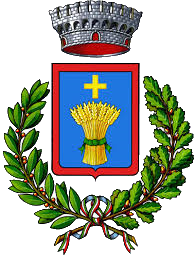
Semestene
Like Bonorva, it experienced the same historical-institutional occurrences after the judicature of Torres fell apart. This old town centre grew along the valley that the Sa ‘orta de sa cariasa river traversed. It is also referenced in the Condaghe of Trullas. It formed a part of the Villarios marquisate in contemporary times.
The mediaeval villa grew up around the Santa Croce church, which served as its core. The church dedicated to St. George, which is currently the parish church, was constructed in the early modern era and features an exquisite pale limestone façade in the late Gothic style.
Semestene parish priest Priest Muroni and the Bonorva Angioyans
As the backbone of the Sardinian Revolution’s ruling core, the Muroni brothers from Bonorva played a significant role in that distinct class, which included land owning shepherds, small-town nobility, city bourgeoisie, and clergy. They saw in Angioy the reliable man to whom they could present a variety of interests. Members of a pastoral elite that had succeeded in making a reputation for themselves by funding their kids’ college education, the Muroni brothers knew that feudalism was the sole thing impeding the freeing up of resources in their world.
The fact that a large number of Bonorvesi participated in the Sardinian revolutionary upheavals allows us to calculate the exact coagulation capability that these strategic locations within the region may possess. Following the conclusion of the Angioyan dream in 1796, the Viceroy Delegation of Sassari forwarded the findings to the Secretariat of State in Cagliari, where they questioned and put on trial Giovanni Carboni, Antonio and Gavino Cau, Baingio Cossu Gasamo, Antonio Cossu Marra, Antonio Frau, Pietro Manunta, Bachisio Morittu Mura, Bachisio Pintus, Giuseppe Piu Cossu, Salvatore Sanna, Pasquale Santucciu, Battista Giovanni Sassu, Angelo, Antonio, Francesco, Giovanni and Sebastiano Sassu, Francesco Uras and Pasquale Zanzu, as well as the Muroni brothers.
A large number, with theologian Francesco Muroni, parish priest of Semestene, as the spearhead.
After coming under the scrutiny of Della Torre, the archbishop of Sassari, for his overt anti-feudal rhetoric and for Semestene’s role as a mandatory station for Angioyan movement adherents, Muroni adhered to the Alternos until the very end. He learned with bitterness that the Valentinian’s restraint was already having a noticeable impact.
Driven back to Scala di Giocca and compelled to escape, he was committed to liberating Gavino Fadda and other Angioyans imprisoned in the city and hoped for an uprising of the Sassaresi.
In order to gather as many people as possible for a new endeavour, he travelled to his Bonorva, which he thought to be a safe haven, on October 7 and 8, 1796, accompanied by several Bonesi.
For an ardent supporter such as himself, losing recognition of his native nation due to its capture by the Prunas was the last straw. Muroni, overcome with sadness and grief, fled into hiding between the Marghine and Montiferru hills. However, he was betrayed by a certain Dore di Sindia, whom he believed to be a friend, and ended up in the hands of the law enforcement.
In chains, he walked through the streets of the city covered with spit and insults. He was taken to the prison of St Leonard and suffered a torturous fate. In response to these defamatory accusations, he wrote, in January 1808, a memorandum sent to the archbishop of Alghero that was addressed to the king and in which, narrating the events in which he was a protagonist, he intended to justify his actions to obtain his freedom.
That year, in fact, despite the general amnesty granted since the arrival of the Savoyards in Cagliari, he was still detained. He died two years later in the convent of St. Peter of Silki in Sassari.
Bibliography
P. ATZORI, Sassari. Il Carmine vecchio. Per un giardino che racconti 4 secoli di storia, Roma 2021, pp. 136-141.
L. BERLINGUER, Alcuni documenti sul moto antifeudale sardo, Cagliari 1962, pp. 31-32.
L. CARTA (a cura di), L’attività degli Stamenti nella «Sarda Rivoluzione» (1793-1799) in Acta Curiarum Regni Sardiniae, vol. 24, Cagliari 2000, pag. 2336.
P. CUCCURU, Francesco Muroni e il problema dell’eversione feudale, in Quaderni della Biblioteca comunale, 1, Sassari 1983, pp. 39-53
A. NASONE, S. A. TEDDE, In sos logos de Angioy. Lungo le strade della Sarda Rivoluzione: testi e documenti, Sassari : EDES, 2021
Credits
A. NASONE, S. A. TEDDE

